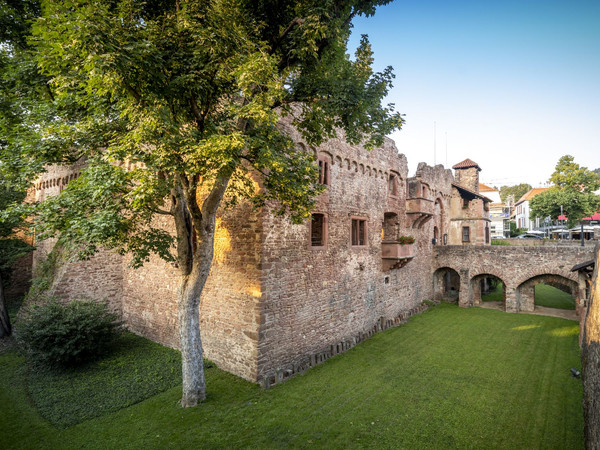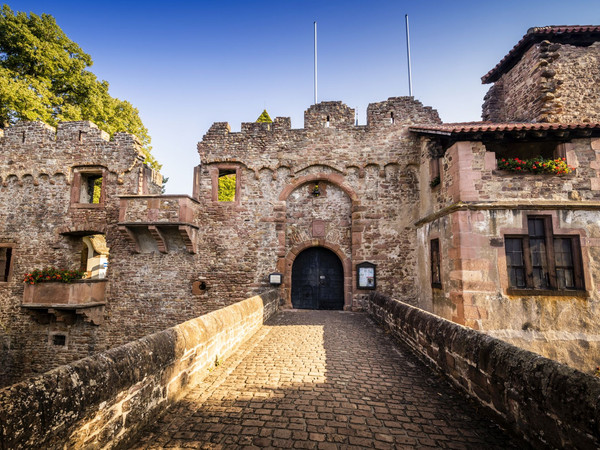The Tiefburg in the Handschuhsheim district was the former domicile of the noblemen.
When and by whom the Tiefburg was built is uncertain. It is possible that it was built as a defensive structure in the early Middle Ages. According to records from the 13th and 14th centuries, it was a moated castle. During the Thirty Years' War, the castle suffered severe damage.
The Helmstatt family chronicle reports that in 1642 fires were set several times, but they could be extinguished. In 1674 the Tiefburg was subjected to further severe raids by Turenne's raiding party. In January 1689 the castle was finally destroyed as a result of the Orleans War. Due to the lack of large financial resources, the ruins were left and a new manor house, including stables and barns, was built to the east of it around 1700. Joseph Freiherr von Helmstatt (1727 to 1803) had some ruins threatened with collapse torn down. Count Raban von Helmstatt (1833 to 1932), who was eager to build, restored the castle essentially as it can be seen today. The castle complex with stables, sheds, barns and farm buildings once extended much further, south to the Dossenheimer Landstrasse. In 1830 and 1844, however, everything was buried.
Archways are embedded in the southern wall of the moat on both sides of the bridge. They were moved to this location in 1912. Originally, they served as courtyard gates of the outer castle area. The four defensive walls date back to the 13th and 14th centuries and are about thirty meters long on each side. The entrance to the low castle was originally formed by a drawbridge. The round-arched gate was probably the entrance to a gate tower. The portcullis once rattled down from the end of the upper archway; its guide can still be seen today. The residential building in the courtyard is probably the oldest structure in the castle. The manor house, also located in the courtyard, has Gothic features. It was built at the beginning of the 14th century but was destroyed in 1689. In 1913 Count Raban von Helmstatt had it rebuilt and extended. What this building originally looked like is not known. Today the "Tiefburg-Feste" is celebrated in the knights' hall of the residential building.
On Saturdays, the castle is the romantic backdrop of the colourful weekly market. Cosy inns with historic interiors can be found on every corner. Pub and window shopping can be excellently combined because many young stores also set modern accents here.

